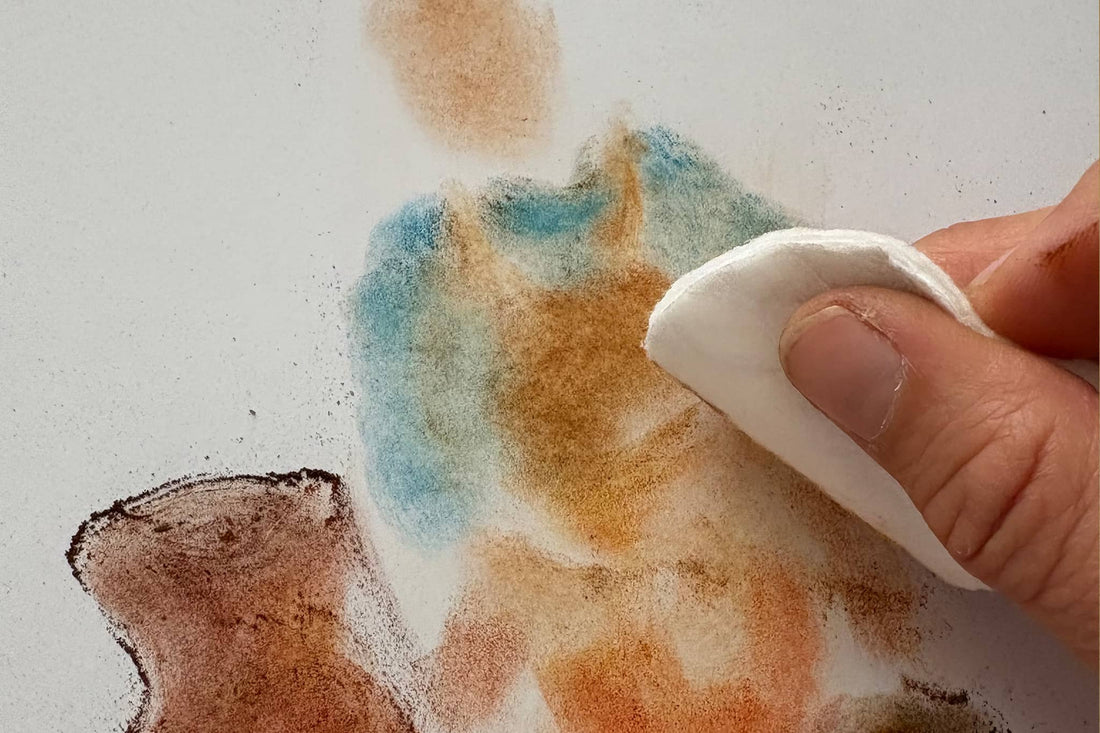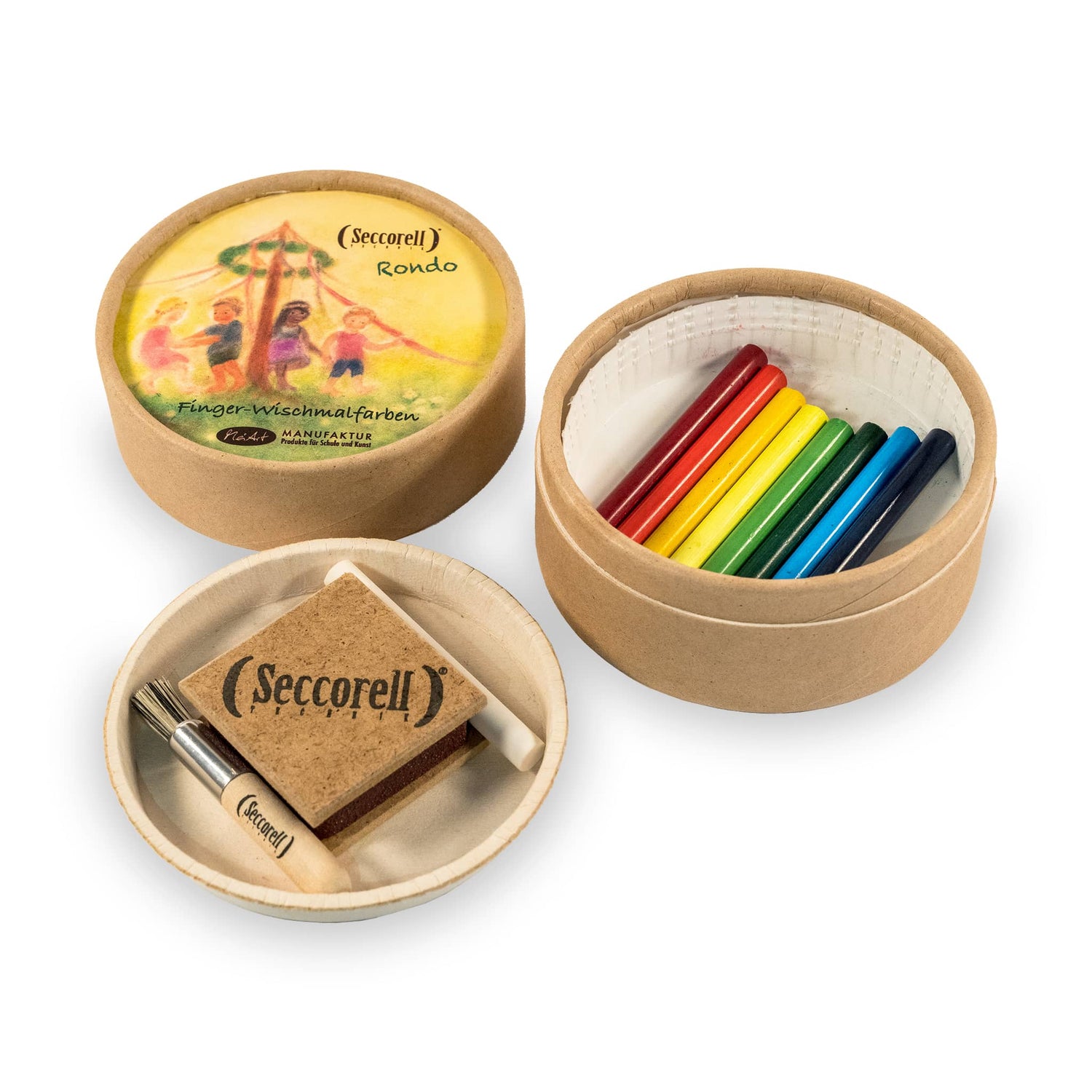
Craft epoch - 3rd class
Share
Epoch booklet design at the Waldorf School in the 3rd grade. Design: Andrea Reiß

The finished epoch booklet picture of a potter.
Step 1

In the first step, we carefully rub the paint powder off the paint sticks with the rubbing block and place it roughly where the pottery is to be created. We use shades of blue and brown. This creates loose islands of color that are later rubbed into the painting ground with the fingers.
Step 2

The color powder is now rubbed into the painting surface. We work on larger areas with our fingers - this creates smooth transitions and even areas of color. For smaller areas and fine details, we use a cotton bud.
Step 3

Now we create the pottery vessels. In this example, brown and gray tones are used, which can be produced by mixing basic colors such as dark yellow, light red and light blue (= brown) or light red and dark blue (= gray). They can be pre-mixed on an extra sheet of paper.
Step 4

By varying the color tones and the amount of powder used, a three-dimensional effect is created - the objects appear three-dimensional and are given depth. Excess color powder is gently wiped off the picture onto an enclosed sheet of paper with a cotton pad, and the colored areas are polished into a smudge-proof finish.
Step 5

Fine details can now be carefully added directly with the color sticks - for example facial features, hair or contours. Tip: Rubbing the paint sticks at an angle on the rubbing block creates a sharper edge - ideal for more precise lines and outlines.
Step 6

Finally, a warm background can be used - for example with yellow and ochre tones - to frame the motif harmoniously. The eraser can then be used to work out further fine contours, light reflections or details. This brings the picture to life and gives it depth and expression.
Step 7

The result is an atmospheric picture of a potter at work.
